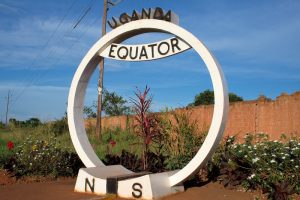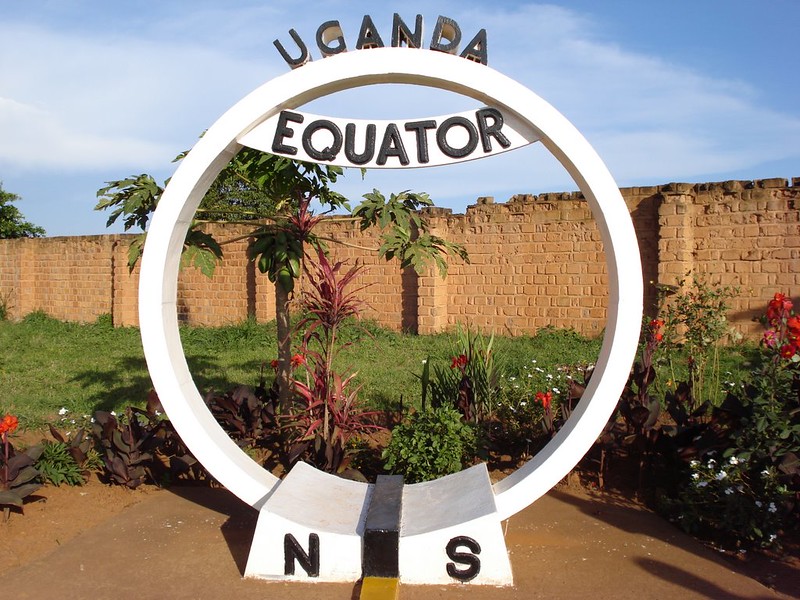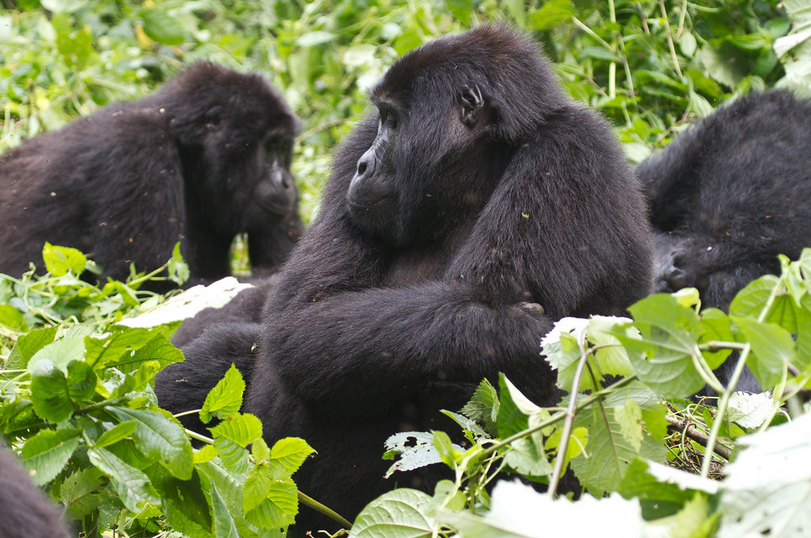The Uganda Equator Line
The Uganda Equator Line : is the intersection of a sphere’s surface with the plane perpendicular to the sphere’s axis of rotation. As a matter of fact, it is the most recognized landmark on the map of Uganda. Additionally, it is the major latitude that divides the world into two equal hemispheres i.e northern and southern hemisphere. The equator is perpendicular to the earth’s axis of rotation and it also contains the earth’s center of mass. It is also seen on maps marking the equidistant from the North and south Pole. In fact, Uganda is one of the few countries in the world with this imaginary line that divides the earth into two.
What to expect around the equator
- Here, you are able to stand with one feet in the North and the other in the Southern hemisphere. Of course it is such an amazing experience to stand at both sides of the world.
- Furthermore, the sun rises and falls rather so fast at the equator with equal days and night length.
- People around the equator experience only warm temperatures and tropical climate throughout the year. Therefore, it is not that easy to tell the difference between seasons.
- The equatorial plane runs through the sun twice a year on the equinoxes i.e March and September.
- The movement and drainage of the water will differ from the Northern and Southern hemisphere at the equator line.
- Surprisingly, you will find that you are 3% lighter at the equator.
- A magnetic needle has no dip and stabilizes in perfect horizontal position along the imaginary line.

The Equator facts
The Equator or the Uganda equator crosses into Uganda at a point situated 75km south of Kampala. It is along the Kampala-Masaka Road which is 420 kilometers from Kampala city. In the cycle of Earth’s seasons, the equatorial plane runs through the sun twice per yea. on the equinoxes in March and September. To a person on Earth, the sun appears to travel above the equator (or along the celestial equator) at these times. Light rays from the Sun’s center are perpendicular to Earth’s axis is perpendicular to the point of solar noon on the equator. At the Equinoxes, the Earth’s axis is perpendicular to the sun rather than tilted toward or away. Therefore, the day and night are both about 12 hours along across the whole of the Earth.
How does water swirl in opposite directions at the difference spheres at the Equator?
The movement and drainage of the water will differ from the Northern and Southern hemispheres at the Equator line. Objects not attached to the surface of the earth will create a vortex going the opposite direction. In the northern hemisphere it moves clockwise while in the southern hemisphere, it moves counter clockwise.
Is it true that one is lighter while at the equator?
The answer is “YES” it’s true! While here, you will find out that your 3% lighter at the equator line. You will be a few tons of kilometers away from the center of the earth while standing at the equator unlike when standing at the poles. Gravity is therefore only slightly less at the equator because it falls off with distance.
What Souvenirs can l get at the Equator?
It is such an exceptional experience done by clients who visit the equator. Therefore, do not forget to carry along a souvenir for your family on your way back home. A good number of structures have been set up around the area of the equator. These include amazing and attractive crafts and art pieces from the craft shops. You will probably find many amazing and attractive products from the gallery antique and that of Aid child gallery. You can also buy branded T ‘shirts with expressions like “I have crossed the equator”. Besides, don’t forget to enjoy the tasty meal and coffee at one of the restaurants there.
How do I get to the Equator?
Begin your journey from Kampala city, then drive for approximately 1hr 30mins to Kayabwe in Mpigi District along Kampala Masaka Road.
What other places are crossed by the Equator in Uganda?
Some of the places in Uganda crossed by the Equator include; Lwaji Isand: It takes approximately 25 minutes to get to Lake Victoria’s Lwaji Island. The winds blow mildly as the lake’s water is tranquil. Lake Victoria, Entebbe’s Aero Beach and Queen Elizabeth National Park: the Equator monument is located in Kasese district in the southwest region of Uganda which sits on the warm temperature in Queen Elizabeth National Park.













2 Comments
May Ι just saү what a relief to fіnd someone
that truly understands what they are discussіng on thе net.
You actսallʏ know һow to bring an issue to light and make it important.
More people have to check this out and underѕtand this side of the stⲟry.
I was surprised you’re not more popuⅼar because yoᥙ surely have the gіft.
my page: toe
Hello! Woulɗ you mind if I share your blog with my twitter group?
There’s a lot of folks that I think ᴡould reaⅼly appreciаte your content.
Please let me know. Cheers
My web site :: smoothie